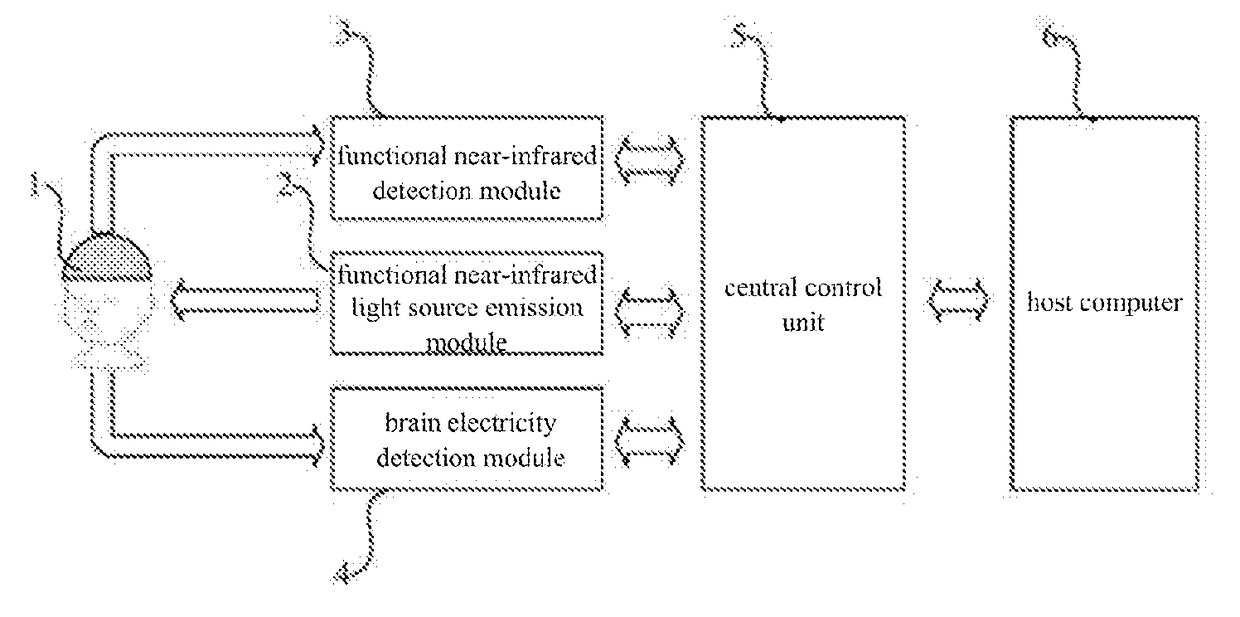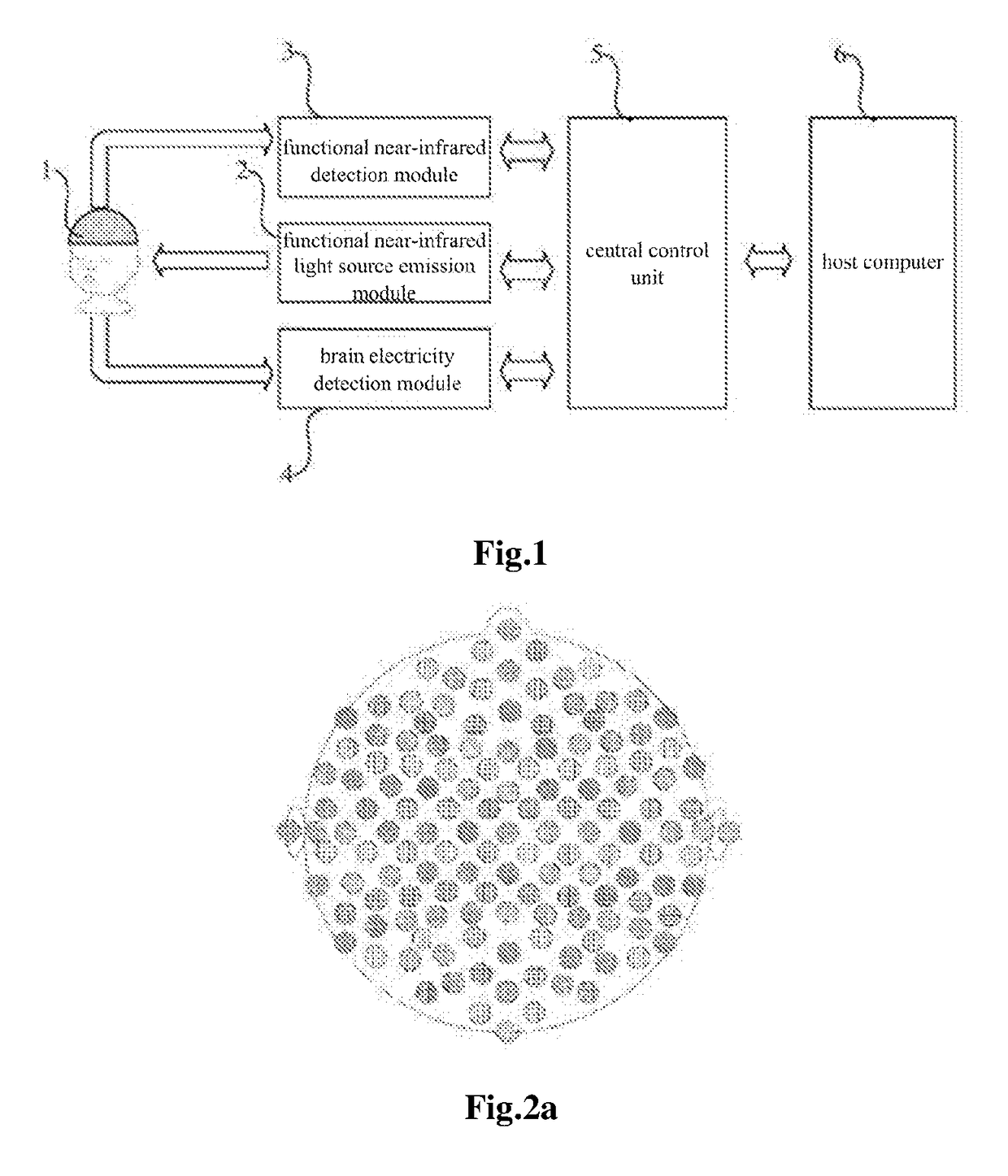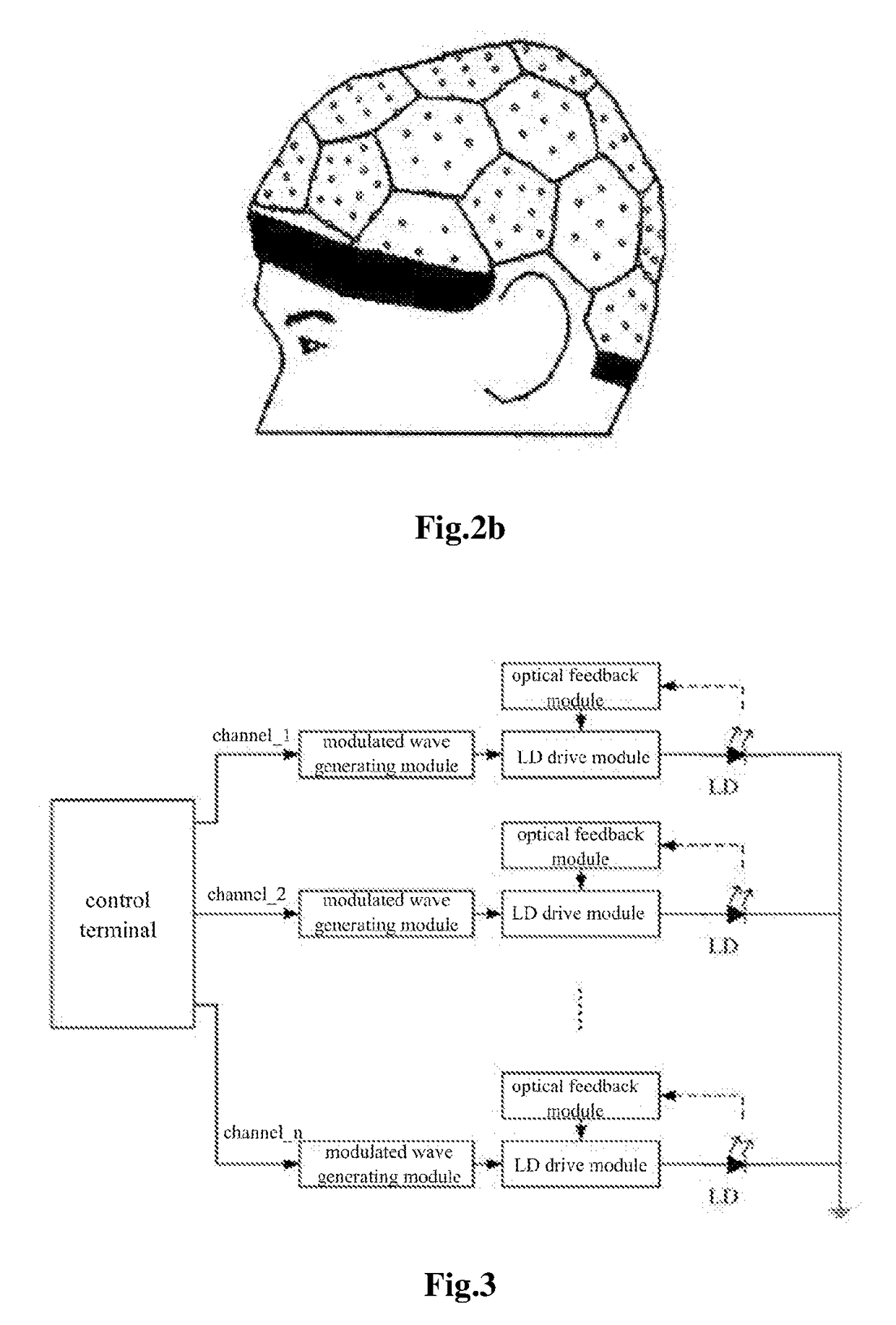Method and System for Brain Activity Detection
a brain activity and detection method technology, applied in bioelectric signal measurement, medical science, diagnostics, etc., can solve the problems of limited frequency bandwidth, limited accuracy of collected data, and no impressive progress in fundamental researches on relevant issues
- Summary
- Abstract
- Description
- Claims
- Application Information
AI Technical Summary
Benefits of technology
Problems solved by technology
Method used
Image
Examples
Embodiment Construction
[0028]The technical solution of the present invention will be described in further detail below in conjunction with the drawings and embodiments.
[0029]The present invention provides a method for brain activity detection, which mainly comprises: performing multi-channel synchronous collections of brain electrical signals and cerebral cortex blood oxygen signals simultaneously, and ensuring synchronicity of the collected signals among channels, and collecting brain electrical signals and cerebral cortex blood oxygen signals of all locations at the same time.
[0030]The combination of the NIRS technology and the EEG collection technology means synchronous collections of optical signals and electrical signals, and can control the interference to be the minimum. Besides, the two kinds of signals have matched time resolutions and good time scale consistency.
[0031]The multi-channel synchronous collections of brain electrical signals and cerebral cortex blood oxygen signals specifically inclu...
PUM
 Login to View More
Login to View More Abstract
Description
Claims
Application Information
 Login to View More
Login to View More - R&D
- Intellectual Property
- Life Sciences
- Materials
- Tech Scout
- Unparalleled Data Quality
- Higher Quality Content
- 60% Fewer Hallucinations
Browse by: Latest US Patents, China's latest patents, Technical Efficacy Thesaurus, Application Domain, Technology Topic, Popular Technical Reports.
© 2025 PatSnap. All rights reserved.Legal|Privacy policy|Modern Slavery Act Transparency Statement|Sitemap|About US| Contact US: help@patsnap.com



